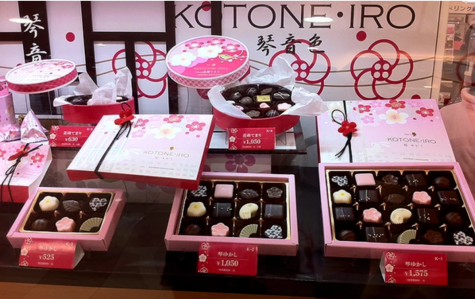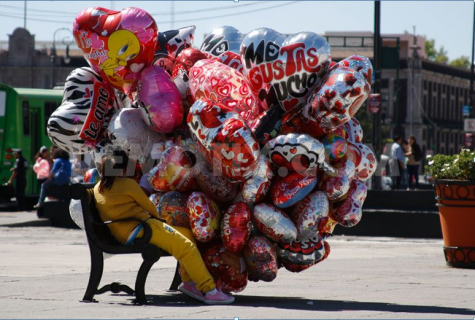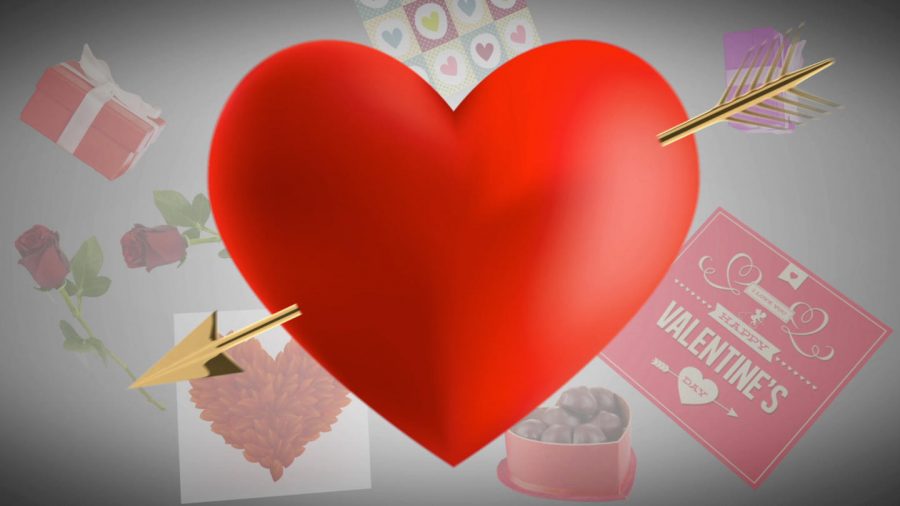Valentine’s Day In Other Countries
Valentine’s Day, held on February 14th, is a period of card, letter, flower, chocolate, and gift-giving to your romantic or platonic relationships. However, if you have a romantic relationship, Valentine’s Day is a day for appreciation and affection towards your significant other by going to a restaurant or flooding your spouse with hearts, red roses, and love. According to WalletHub, women spend an average of $64 on Valentine’s Day, while men spend $339. The insane gift and date spending on Valentine’s Day proves how important Valentine’s Day is for many consumers in the U.S. However, how is Valentine’s celebrated in other countries?
Denmark

Denmark is one of the early bloomers who just started celebrating Valentine’s Day. Beginning in the early 1990s, Denmark started sending appreciation for their partners with flowers, not red roses, but white flowers called “snowdrops.” One of the many traditions is called gaekkebrev, also known as “joke letters” to their admired. They are poems that are sent along with white flowers.
Japan
 One of the most unique Valentine’s Day is in Japan, and it’s especially an important holiday as well. Although Japan has its occasional gift-giving and romantic atmosphere, one of the key differences is that the woman usually gives chocolate to the boy she admires. Another difference is that women typically give chocolate or candy, as opposed to flowers or jewelry. There are two types of chocolate, giri-choco and honmei-choco. “Giri” means obligation, so giri chocolate is given to family or friends as appreciation while “Honmei” chocolate is for romantic partners since they are more expensive. Some chocolates could also be homemade, which are valued more significantly since the girl dedicates time and love into the chocolate. Japan also holds “White Day,” a day where men return the favor of Valentine’s Day on March 14th.
One of the most unique Valentine’s Day is in Japan, and it’s especially an important holiday as well. Although Japan has its occasional gift-giving and romantic atmosphere, one of the key differences is that the woman usually gives chocolate to the boy she admires. Another difference is that women typically give chocolate or candy, as opposed to flowers or jewelry. There are two types of chocolate, giri-choco and honmei-choco. “Giri” means obligation, so giri chocolate is given to family or friends as appreciation while “Honmei” chocolate is for romantic partners since they are more expensive. Some chocolates could also be homemade, which are valued more significantly since the girl dedicates time and love into the chocolate. Japan also holds “White Day,” a day where men return the favor of Valentine’s Day on March 14th.
Mexico
 On February 14th, Mexico also celebrated Valentine’s Day, described as El Dia del Amor y la Amistad (The Day of Love and Friendship). Although Valentine’s Day is a European-inspired holiday, Mexico still carries its traditions although it can be more commercial. One popular product that is prevalent during the holiday is love heart balloons of every tone of red and pine. Balloon venders carry bundles of balloons at the marketplace or on the street, and sometimes these same vendors would sell roses. Mexico is also known for its public affection. Less hidden, partners have no fear of showering love.
On February 14th, Mexico also celebrated Valentine’s Day, described as El Dia del Amor y la Amistad (The Day of Love and Friendship). Although Valentine’s Day is a European-inspired holiday, Mexico still carries its traditions although it can be more commercial. One popular product that is prevalent during the holiday is love heart balloons of every tone of red and pine. Balloon venders carry bundles of balloons at the marketplace or on the street, and sometimes these same vendors would sell roses. Mexico is also known for its public affection. Less hidden, partners have no fear of showering love.
China
 China also celebrates Valentine’s Day. In fact, China celebrates two Valentine’s Days. There are two festivals: Lantern Festival and Double Seven (Qixi) Festival. The Lantern Festival is considered more ancient. In ancient China, unmarried ladies were restricted from going outside! Only during the Lantern Festival could women go outside to view the exquisite lanterns displayed. That festival was the only time an ancient Chinese woman could go on a “date.” The Double Seven Festival is the officially recognized Valentine’s Day. The day actually holds a Chinese legend of two stars named Altair and Vega. According to China Highlights, “Altair is said to be Niu Lang (a poor but industrious cowherd, Vega is said to be Zhi Nü (the seventh daughter of the lord of heaven, and a romantic love story is told of the two).” Valentine’s Day in China, similar to Westerners, consists of special dates, gift exchanges, and even marriage registrations. There are however some gifts that give bad omens and shouldn’t be gifted to un-married couples. First, the umbrella is considered a bad omen. In mandarin, umbrella is 伞 (san), which also sounds like “breaking up.” Second, shoes are also considered bad luck because it implies “packing off your love.”
China also celebrates Valentine’s Day. In fact, China celebrates two Valentine’s Days. There are two festivals: Lantern Festival and Double Seven (Qixi) Festival. The Lantern Festival is considered more ancient. In ancient China, unmarried ladies were restricted from going outside! Only during the Lantern Festival could women go outside to view the exquisite lanterns displayed. That festival was the only time an ancient Chinese woman could go on a “date.” The Double Seven Festival is the officially recognized Valentine’s Day. The day actually holds a Chinese legend of two stars named Altair and Vega. According to China Highlights, “Altair is said to be Niu Lang (a poor but industrious cowherd, Vega is said to be Zhi Nü (the seventh daughter of the lord of heaven, and a romantic love story is told of the two).” Valentine’s Day in China, similar to Westerners, consists of special dates, gift exchanges, and even marriage registrations. There are however some gifts that give bad omens and shouldn’t be gifted to un-married couples. First, the umbrella is considered a bad omen. In mandarin, umbrella is 伞 (san), which also sounds like “breaking up.” Second, shoes are also considered bad luck because it implies “packing off your love.”
Conclusion
Although Valentine’s Day seems like the similar capitalistic holiday we all love and enjoy, other countries celebrate Valentine’s Day with different traditions and gifts rooted in culture and history.

Ali Wu, a senior, is excited to represent art in the Keynote with Siona this year! She aims to connect the Keystone community through writing and comics!...


